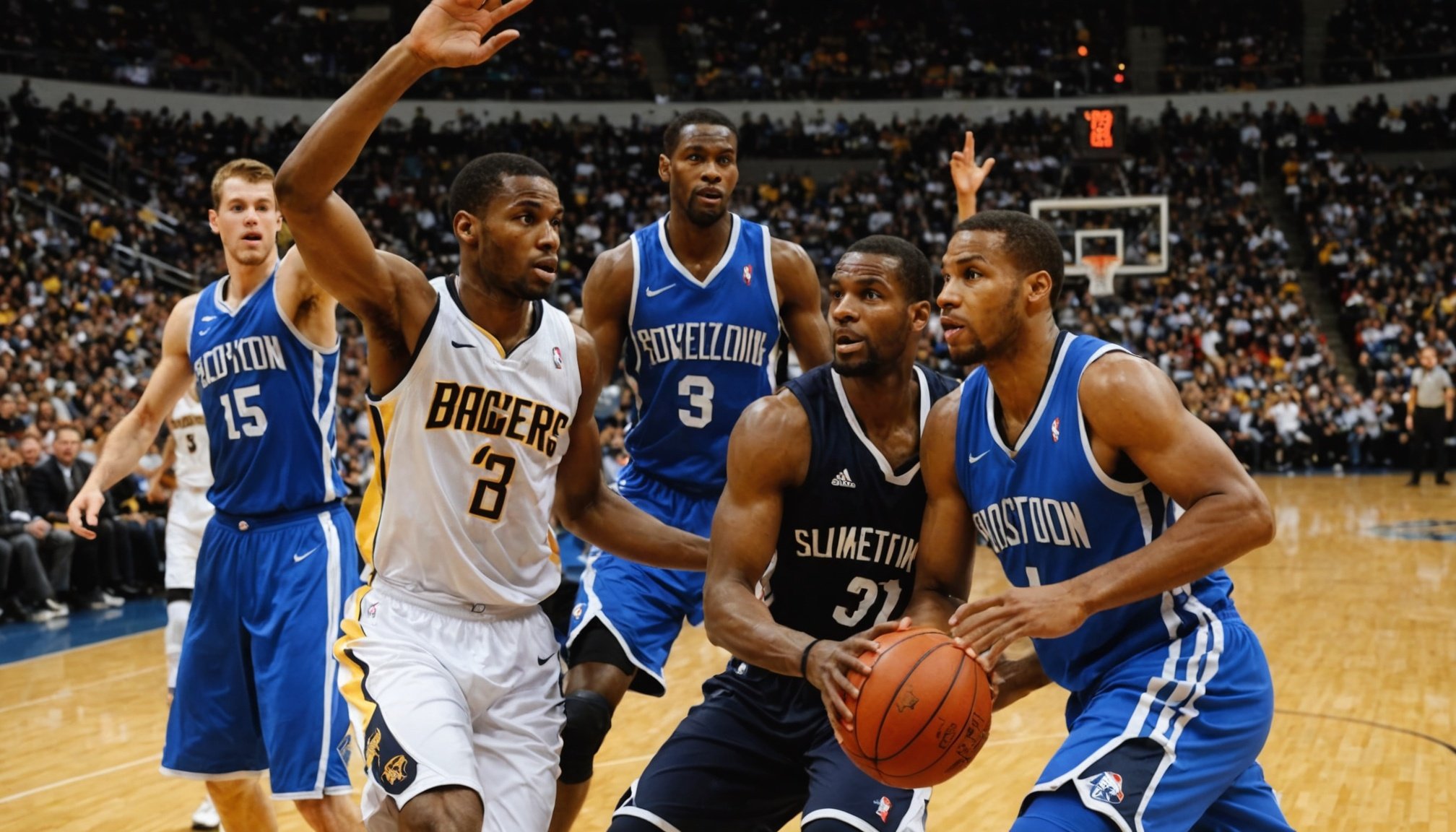Basketball is more than just a sport; it is a global phenomenon that binds cultures, countries, and communities. Within this expansive landscape, numerous leagues play pivotal roles in shaping the talents and careers of countless players. From the high-octane courts of the NBA to the strategic arenas of the Euroleague, each league offers unique opportunities and challenges for player development. But how do they compare? This article seeks to explore the multifaceted world of basketball leagues and discern how they contribute to the evolution of their players.
The NBA: A Global Powerhouse
The National Basketball Association (NBA) is often held as the pinnacle of professional basketball. Its influence spans globally, and it is widely considered the ultimate stage for players seeking to showcase their skills. But what makes the NBA such a formidable force in player development?
In parallel : What are the best exercises to increase vertical jump for basketball players?
First and foremost, the NBA’s infrastructure is unparalleled. With state-of-the-art training facilities, extensive scouting networks, and a culture of excellence, the league is positioned to nurture and refine talents. Players benefit from access to world-class coaches, sports scientists, and nutritionists, all of whom contribute to their holistic development.
Moreover, the competitive nature of the NBA fosters resilience and adaptability. With 30 teams vying for supremacy, players are constantly pushed to elevate their game. This intense competition catalyzes growth, ensuring that only the most skilled and dedicated athletes thrive.
Also to read : How can basketball players balance training and recovery to optimize performance?
However, the NBA’s player development extends beyond the court. The league invests in educational and career transition programs that prepare athletes for life after basketball. Such initiatives underscore the NBA’s commitment not just to developing players, but also well-rounded individuals.
Euroleague: The Strategic Frontier
Contrasting sharply with the NBA’s flamboyance is the Euroleague, Europe’s premier basketball competition. Known for its strategic depth and tactical rigor, the Euroleague stands as a vital platform for player development. But how does it differ from its American counterpart?
The Euroleague places significant emphasis on strategy and team play. Unlike the individual brilliance often celebrated in the NBA, Euroleague emphasizes collective effort and strategic execution. This focus on team dynamics equips players with a nuanced understanding of the game, honing their ability to adapt to various playing styles and systems.
Furthermore, the Euroleague’s rigorous schedule demands stamina and focus. Players often face multiple games per week, each with its unique challenges. This environment cultivates a level of mental and physical toughness that is invaluable in player development.
Culturally, the Euroleague offers players exposure to diverse teams and playing styles. Competing in different countries broadens their perspectives and enhances their adaptability. This international exposure not only enriches their games but also prepares them for future opportunities in global leagues.
The Rising Influence of Asian Leagues
Over the past few years, Asian basketball leagues, particularly those in China and Japan, have seen significant growth. These leagues are becoming hotbeds for emerging talent and offer unique avenues for player development.
The Chinese Basketball Association (CBA) and the Japanese B.League are at the forefront of this movement. These leagues offer players competitive salaries and a platform to showcase their skills. With increasing investments in infrastructure and talent acquisition, they are gaining recognition for their role in nurturing players.
One of the standout features of Asian leagues is their integration of technology and analytics in sports. These leagues leverage data-driven insights to optimize player performance and development. This approach not only enhances individual growth but also contributes to the evolution of game strategies.
Moreover, the cultural diversity and promotional opportunities in Asian leagues add another layer to player development. Players can explore sponsorship deals and engage with a vast audience, enhancing their marketability. This exposure to different markets and cultures prepares them for the global stage.
Grassroots and Feeder Leagues: The Backbone of Player Development
While professional leagues are instrumental in shaping careers, grassroots and feeder leagues serve as the foundation of player development. These leagues, often underappreciated, play a crucial role in identifying and nurturing young talent.
Grassroots programs focus on instilling the fundamentals of basketball in young players. From basic skills to school-level competitions, these programs lay the groundwork for future success. They are often the first touchpoint for aspiring athletes, providing them with the necessary skills and confidence to pursue a career in basketball.
Feeder leagues, such as the NCAA in the United States, act as critical bridges to professional leagues. They offer players a platform to hone their skills, gain exposure, and attract scouts from major leagues like the NBA and Euroleague. These leagues emphasize academic and athletic development, ensuring players are well-equipped for the demands of professional sports.
Moreover, grassroots and feeder leagues foster a sense of community and teamwork. They emphasize values such as discipline, respect, and perseverance, which are essential for success both on and off the court. These leagues are where the seeds of player development are sown, eventually blossoming into accomplished professionals.
In the diverse ecosystem of global basketball, each league contributes uniquely to player development. From the NBA’s comprehensive infrastructure to the Euroleague’s strategic focus, and the burgeoning Asian leagues’ integration of technology, each offers players distinct paths to success.
Yet, amid these professional sports giants, grassroots and feeder leagues remain the lifeblood of basketball. They instill foundational skills and values that shape the future of players.
Ultimately, the world of basketball showcases a rich tapestry of leagues and pathways, each integral to the growth and evolution of the sport. By understanding these dynamics, we gain insight into the complex journey of players who aspire to leave their mark on this global game.











